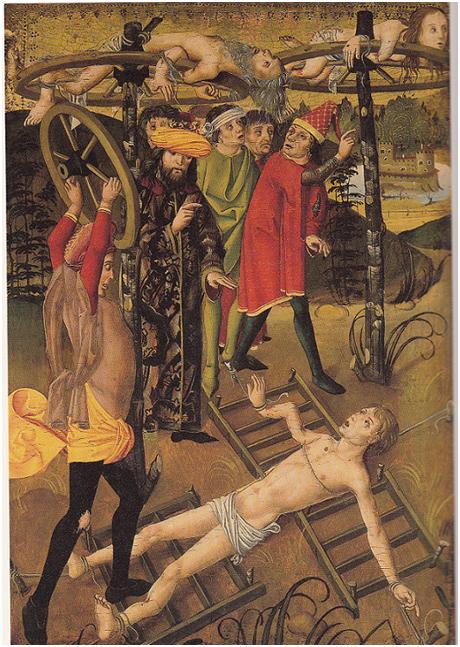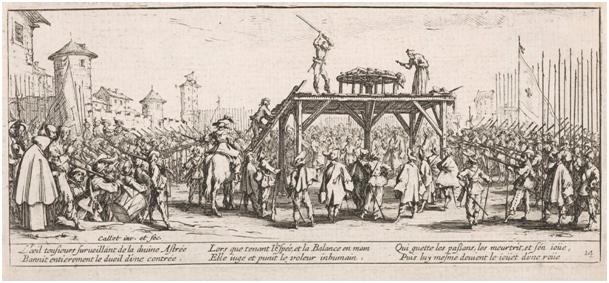The Wheel
The wheel was a nearly universal mode of execution in medieval Europe, used in the contemporary Russian and Ottoman empires as well. The victim is tied, face up, to a wooden grid on the ground. The executioner wields an ordinary cartwheel and uses it to break the victim's limbs. The broken body, now unnaturally pliable, is then tied to the same wheel so that the limbs follow its perimeter. This was breaking with the wheel.

breaking with the wheel
A variation was breaking on the wheel: the victim is tied to a wheel in a horizontal position while the executioner breaks the limbs with a maul. In both cases, the wheel with the broken body was placed on a tall pole, dug firmly into the ground, and left there until the victim died and much longer, until the body is fully decomposed and eaten by the birds.

breaking on the wheel
By the late 18th century, the execution of this punishment in the German countries and Austria, wherefrom it came to Serbia, was regulated in every detail. The number of blows and the order in which they were struck were spelled out in the judgement. Breaking „from the bottom up“ meant that arms and legs had to be broken first, and the chest and/or the neck next, if at all. It was more severe than breaking „from the top down“, where the executioner first aimed for the chest and/or neck, killing the victim outright and sparing him the prolonged suffering. This difference was reflected in the executioners' tariffs. According to the 1772 price list of the executioner for the Bacs region, breaking „from the bottom up“ cost twenty, and „from the top down“ only eighteen forints.
In Serbia, the proceeding were regulated by the so-called Karadjordje's Penal Code, dating from cca 1808: „Break both legs and both arms in two places each, lift him on the wheel while still alive and do not take him down for as long as the bones hold together“. This mode of execution was not very frequent and fell out of use completely after the 1830s. However, the wheels were used regularly to publicly display the bodies of persons executed in other ways.